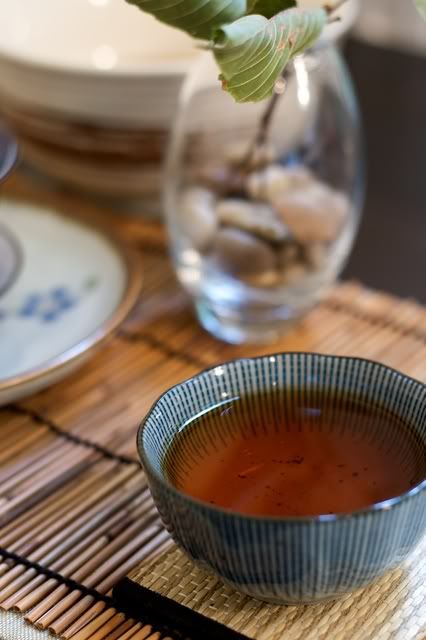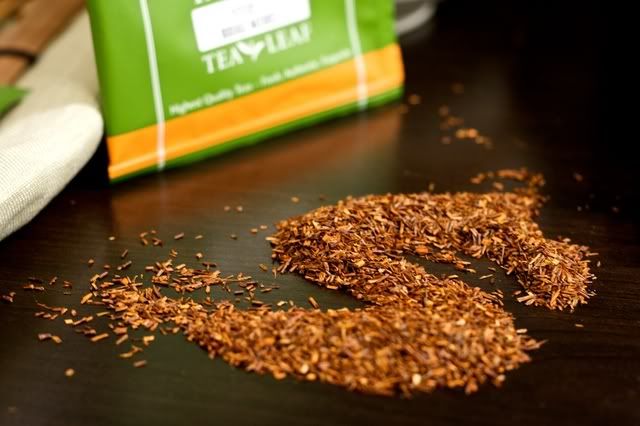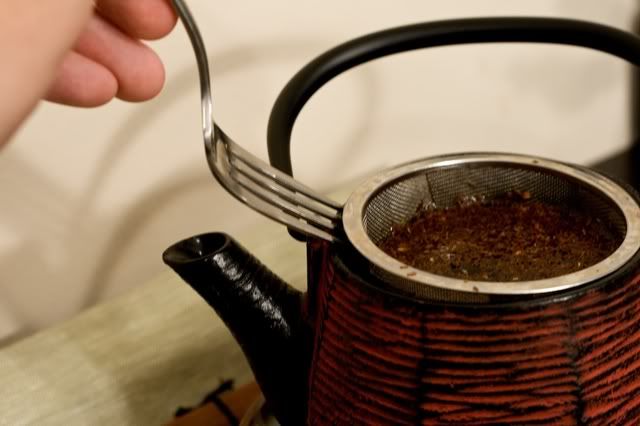I recently tasted two Hawaiian teas from the
Onomea Tea Company, located near Hilo on the big island, courtesy of Victoria who recently visited their farm. I received two samples (very generous considering their astronomical prices) of oolong and steamed green tea. First, my notes on the oolong.
Onomea Tea Co. Oolong Pictured with the dry leaf is my Hawaiian Bug Swatter; basically a mini-flip-flop on a stick. My girlfriend asked me to bring her gifts from the ABC Store, so I reluctantly obliged; this was one of the results.
Pictured with the dry leaf is my Hawaiian Bug Swatter; basically a mini-flip-flop on a stick. My girlfriend asked me to bring her gifts from the ABC Store, so I reluctantly obliged; this was one of the results.The dry leaf is gorgeous; the picture does not do it justice. There are more white tips and there is a more attractive texture than is shown here. They don't smell like much at all, though there is a hint of pickled ginger aroma.
 More ABC Store junk.
More ABC Store junk.I brewed these by dumping the whole sample (9g) into a gaiwan and brewing with boiling water in short— around 20 seconds to start— infusions. The resultant liquor was peach-colored, and woodsy-flavored. Sadly, this tea isn't all that great, which came as a bit of a surprise after my positive experience with the steamed green (see below). It is pretty much all woodsy flavor, with moderate astringency. Someone in TeaChat noted that oolong is much more difficult to make than other teas, and it would seem that these new tea tea makers will need more experience (not that I claim to have it; oh the luxury of being a critic!) before they produce some decent oolong.

Evidence of this is seen in this photograph; the two leaves are very different colors, showing a large unevenness in oxidation. There could be as much as a 30% difference between these two leaves, something you almost never see in quality Chinese or Taiwanese oolongs. Variation in color on one leaf is usually fine, but when different leaves are completely different colors like this, it is not a good thing.
Onomea Tea Co. Steamed Green
These dry leaves, much like the oolong, are absolutely gorgeous. When I heard Victoria mention "steamed green tea" I pictured something decidedly more sencha-like, so I was (pleasantly) surprised to see these. They smell *just* like pickled ginger, which is quite a unique aroma for an unflavored tea to have. I brewed 3g, 170-175°F in a 100mL gaiwan; steep times were 90 seconds, 140 seconds, 180 seconds (after this I stopped paying attention to timing, but got a couple more brews in before it got to the sweet-water point).

This is a smooth, sweet, creamy tea. There is not a lot going on in the flavor or color department in the first infusion, but it soon wakes up and gives a soft pickled-ginger taste and aroma, which is really very nice. If you like the pink (or white, if it's homemade— there's a fun fact for you) stuff that comes along with your sushi, you will like this tea. Besides that, though, there still isn't a whole lot going on. I didn't think this is anything like your typical Japanese steamed green tea; it is quite unique.

The amount of care that has been put into the production of this tea is obvious; the wet leaf shows that full leaves were carefully handled and processed to make this tea. These puppies are thick, pliable, and leathery; is this because the plants are so young, I wonder? Anyway, while this tea is quite interesting, I'm not sure it would replace sencha as my favorite. Still, it will be interesting to see how this tea develops as the plants age and take on some character.
ConclusionThough I wasn't all that impressed with the oolong, I was surprised by the quality of the steamed green tea and the amount of love that these new tea producers have clearly folded into their products. Thank you, Victoria, for the samples; I always love trying teas from new places!
The Last WordYarr!


























